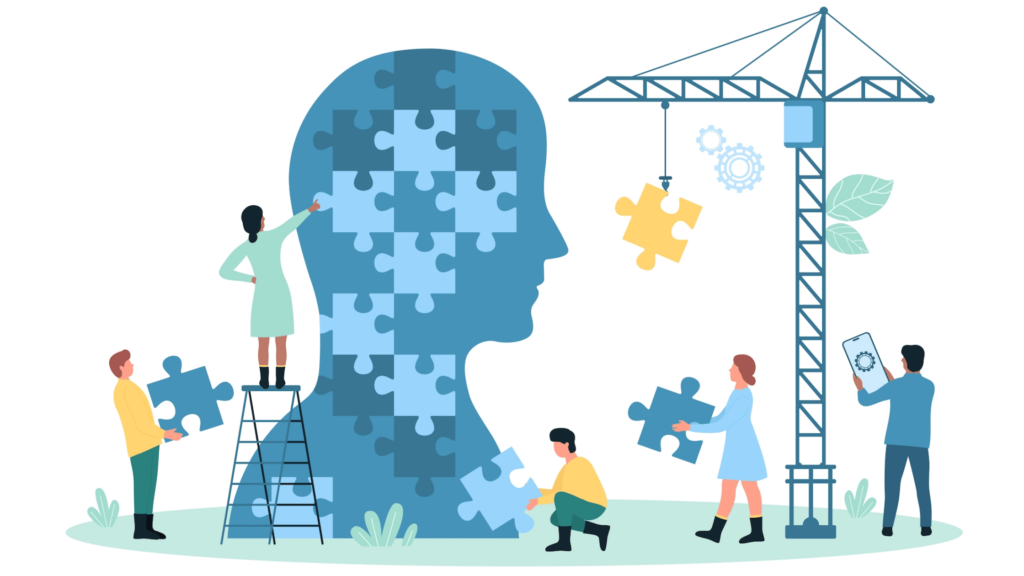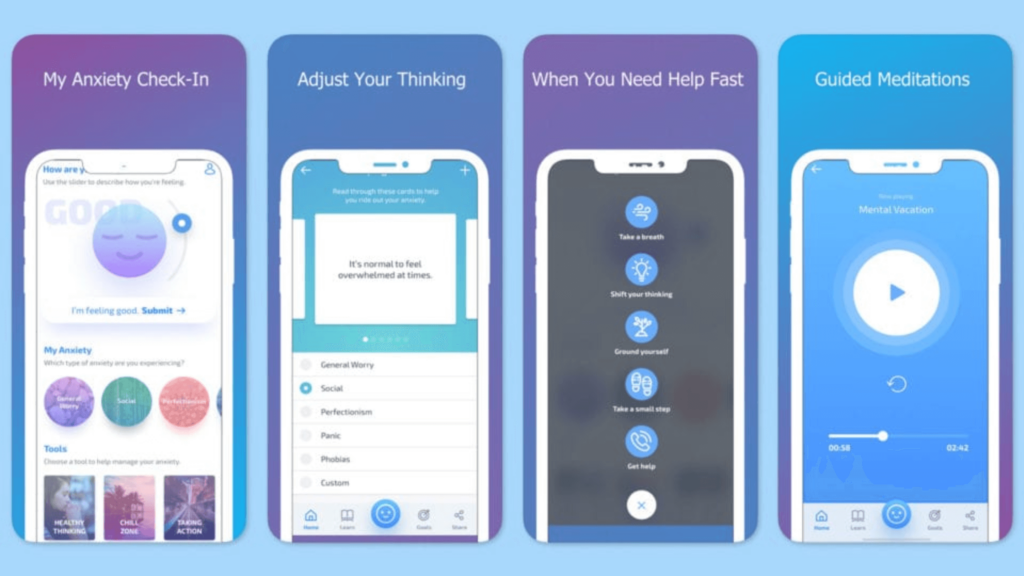Suicide rates in the US construction industry are three times higher than the national average, and men in high-skill and high-stakes jobs are one and a half times more likely to die by suicide. On average, one in five construction workers suffer from mental health issues. Changing the stigma around mental health and shifting to a caring culture can help facilitate greater mental health awareness and support for workers struggling with mental illness.
Quick look
- The construction industry ranks second for the highest number of suicides among all major industries.
- A high-pressure environment, the “macho” mentality of the industry, and opioid dependency are primary reasons that construction workers are at a higher suicide risk.
- Workers with mental health issues choose not to seek help due to stigma, fear of judgment, fear of negative job consequences, and lack of awareness about accessing help.
- Creating a caring culture, facilitating better access to resources, and training management are simple ways to improve mental health outcomes for construction workers.
What is mental health?

According to the World Health Organization (WHO), mental health is “a state of mental well-being that enables people to cope with the stresses of life, realize their abilities, learn well and work well, and contribute to their community.”
But mental health is more than just the absence of mental or neuropsychiatric conditions. It exists on a broad and complex continuum that varies from one person to the next.
Mental health conditions include a variety of mental disorders and psychosocial disabilities, along with mental states associated with distress, impaired function, or risk of self-harm.
While the nature of mental well-being is mostly internal and emotional, it can manifest in a variety of physical symptoms—poor focus and attention, reduced sleep quality, loss of appetite, impaired interaction with others, substance abuse, and low energy—and an increased risk of health complications, including panic attacks, heart attack, and stroke.
Here’s why it matters: Workplace injuries are common in the construction industry, and mental illness can affect a person’s ability to work safely, increasing the risk of injury to both themself and co-workers.
The industry is heavily focused on safety through education/training and personal protective equipment (PPE), but mental well-being needs to be included in that.
The bottom line: Mental health is your state of emotional, psychological, and social well-being. Your mental health influences how you think, feel, and act, but it also shapes how you handle stress, relate to others, and make decisions.
Mental health conditions
Statistics from the National Institute of Mental Health suggest that nearly one in five adults live with a mental illness, which translates to about 57.8 million people in 2021. While the underlying trigger differs based on the individual, common factors that can contribute to mental illness include:
- Biological factors (genetics, brain chemistry)
- Life experiences (trauma, abuse)
- Family history of mental illness
Some common mental health conditions include:
- Anxiety disorders (including generalized anxiety (GAS), panic disorders, obsessive-compulsive disorder (OCD), phobias, and social anxiety)
- Attention-deficit hyperactivity disorder (ADHD)
- Bipolar disorder
- Borderline personality disorder (BPD)
- Depression
- Eating disorders (anorexia nervosa, binge eating disorder, and bulimia nervosa)
- Post-traumatic stress disorder (PTSD)
- Schizophrenia
- Seasonal affective disorder (SAD)
- Self-harm
- Suicide and suicidal behavior
The pervasiveness of mental health worldwide can’t be understated, but there appears to be a strong link between mental health conditions and the construction industry.
Mental health and construction

Mental health is a growing concern within the construction industry—the field ranks second for the highest number of suicides among all major industries. It’s estimated that up to 90% of people who die by suicide have an underlying mental health condition. Depression is the most common illness, but other conditions like anxiety and substance abuse disorders can also contribute.
Several factors contribute to higher-than-average suicide rates and mental health concerns in the construction industry. Some of these include:
- Male male-dominated industry—men experience the highest suicide rates
- An industry that values toughness and strength—mental issues and seeking help may be considered weak
- Stigma and fear around mental health
- Shame and fear of judgment
- Chronic pain
- Seasonal and cyclical work contribute to job and financial insecurity
- High-stress and deadline-driven industry
- Limited job control
- Long work hours, including overtime, lead to fatigue and burnout
- Relative low socioeconomic status
- Inequality
Some experts suggest that a high-pressure environment, the “tough guy” mentality of the industry, and opioid dependency are some of the main factors placing construction workers at higher suicide risk.
Mental health issues are so pervasive in the construction industry that OSHA has intervened to increase mental health awareness of the alarmingly high suicide risk in the industry. OSHA also recently signed an alliance with the American Foundation for Suicide Prevention to promote mental health in the workplace and implement suicide prevention measures, including providing better access to healthcare professionals, businesses, and trade organizations with adequate resources and improving training to raise awareness of issues related to occupational deaths by suicide.
But despite taking steps in the right direction, suicide death rates in the industry remain devastatingly high, and the industry is still rife with compounding pressures that have adverse effects on mental health.
So, why might workers with mental health issues not seek help, even if available?
According to The American Psychiatric Association Foundation 2021 pulse survey was conducted to better understand mental health experiences and needs in the construction industry, there are four reasons why a worker may choose not to seek help:
- Shame and stigma (78%)
- Fear of judgment by others (77%)
- Fear of negative job consequences (55%)
- Don’t know how to access care (46%)
How to build mental health awareness

Many companies in the construction industry recognize the importance of making mental health resources more accessible—and many are taking steps to do so. This helps to improve worker education and awareness, reduce stigma, and shows organizational commitment to supporting worker mental health and well-being.
The American Psychiatric Association Foundation’s 2021 pulse survey focused on four key areas:
- Leadership engagement
- Raising mental health awareness—resources and strategies
- Creating a mentally healthy organizational culture
- Enhancing access to services and supports
It consisted of a 20-question online survey administered to 1,175 respondents in the construction industry. Of the respondents, 45% represented C-Suite leaders, showing the importance of these issues to upper management in the field.
Interestingly, survey findings show that a whopping 77% of Presidents, CEOs, and Owners acknowledge that addressing mental health at work is a priority—this can be done by promoting awareness, helping to reduce stigma around mental health, and encouraging people to get help when needed.
The following is a list of resources respondents said would be most helpful to share with employees:
- 69% – Supervisor training
- 66% – Employee training
- 64% – Toolbox talks
- 51% – Fact sheets
- 48% – Employee Assistance Program (EAP)
- 43% – Posters
- 39% – Mental health apps
- 36% – Newsletter content
- 33% – Emails on mental health
- 31% – Hardhat stickers
- 25% – Wallet cards
But while giving workers resources to improve mental health is a good place to start, organizations must also change the culture.
1. Promote a caring culture
Since the pandemic, rates of people experiencing stress, anxiety, and depression have skyrocketed, along with projected increased rates of suicide and overdose deaths. But shifting company culture to support workers going through mental health issues can have positive outcomes for retention rates, performance and productivity, and better business results.
So, what makes up a caring culture?
First, workers need to feel connected to one another and the organization. Most people value a sense of trust and community amongst their peers and co-workers, and it’s an essential part of shifting to a caring culture.
But it’s not just employees who need to care—organizational culture starts at the top, meaning it’s imperative that the C- and V-suite recognize their role in making workers feel valued and appreciated.
Additionally, a caring culture has leaders who recognize and reinforce the importance of workers caring for their mental health and well-being and seeking help when needed. This means leaders modeling and communicating that “it’s ok not to be ok” and reminding workers that mental health is just as important as physical health—they must get help for a mental condition as they would for a physical one.
2. Facilitate better access to resources

Employee assistance programs (EAPs) are needed to help workers manage various issues, ranging from health problems to finances, that could result in distress or a mental health crisis. These programs are generally purchased through a vendor and are designed to offer 24/7 support to workers and their immediate family members.
Additionally, employers can:
- Form peer support groups encourage mutual aid for workers going through similar situations or difficulties.
- Improve awareness about mobile app availability to reduce stress and promote mental well-being.
3. Train upper management
Although most resources target workers, mental health awareness starts at the top. It’s on company owners and managers to recognize the signs of mental health issues in their employees and provide adequate resources and support.
Employers must take action by offering general training and education on stress management and mental health—for example, the benefits of proper nutrition in mental well-being and exercise as a coping mechanism for stress. Targeted training modules can help address the proper skills for managing mental health imbalances and emotional issues.
Employers should also provide upper management with further training to help them develop empathy skills, identify signs of mental health problems, and develop proper listening skills for employees who need to talk. They should also be given adequate resources to refer workers for further help.
Final thoughts
While standalone programs are essential to address the growing mental health crisis in the construction field, longer-term solutions for construction companies are critical to shifting the culture and environment that facilitates mental health problems in the first place.
Reducing the stigma, improving access to resources, and implementing a better work/life balance for employees are all important pieces of the puzzle to enhance worker mental health and minimize death by suicide.




3 comments